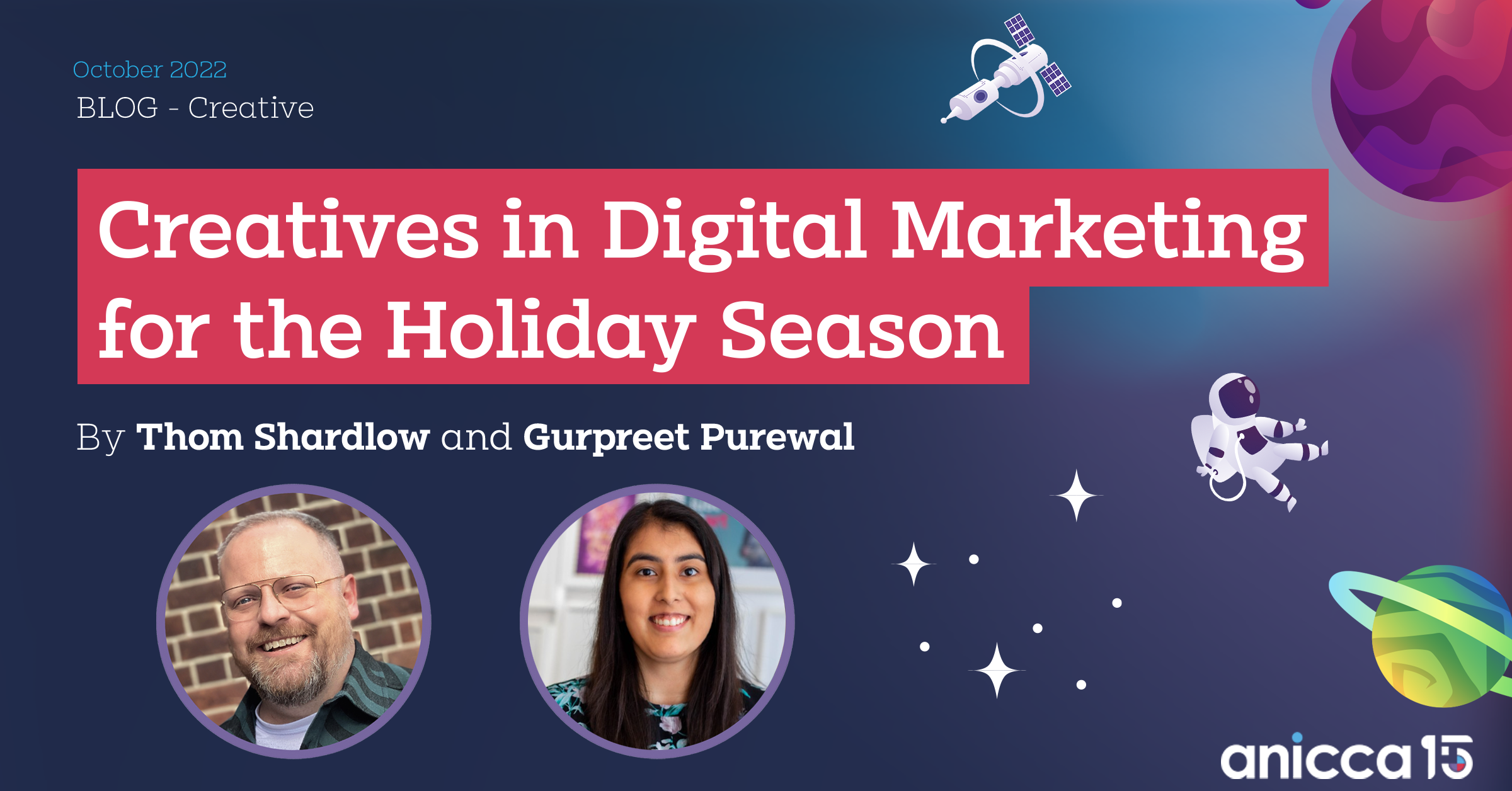Creatives in Digital Marketing for the Holiday Season

In September, Anicca’s Head of Client Strategy Thom Shardlow, presented a webinar on how to utilise creatives for the holidays, with ideation and best practices. It’s easy to feel overwhelmed at this time of year, with Christmas approaching, and a number of other events all coming on top of one another; it can easily throw a spanner into your marketing strategy.
Watch the recording of Thom’s webinar and read more details below:
Here is a timeline, showing the upcoming events for the next few months
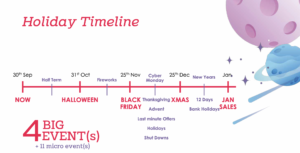
The key to managing this is relevance, without getting lost in spontaneous content
This can be thought out through these key points:
- What do the audience want to hear?
- How do you want to convey this message?
- Who are these posts aimed at?
- What success do we expect?
- What damage may occur if we get something wrong?
- How does this connect to our business goals?
Don’t just promote something simply because you need Christmas content; this has to be used wisely. This is the time to be as relevant as possible, using whatever you feel is appropriate to do this.
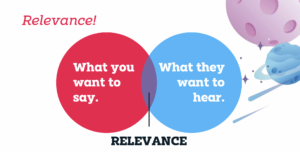
Relevance is key, as audiences have become very good at spotting insincerity in content, which results in low interaction and engagement. You do not want your audience to believe you are jumping on the Christmas bandwagon with your content and just following what the rest of the market is doing.
It can be very tempting to create a one-off deal for the season, but in the long term it can look cheap and demeaning to the brand.
So, how do we prepare for the holiday season and what does Christmas mean to our brand? An easy method to do this is simply to ask yourself some questions and create an agenda for the business. This agenda needs to be split into three parts: your business aims, your audience and your offer.
Your Holiday Agenda
| Your Business Aims | Your Audience | Your Offer |
|
|
|
Now we have our holiday agenda, we need to know how our users behave, remember we only have 0.125 seconds to grab their attention!
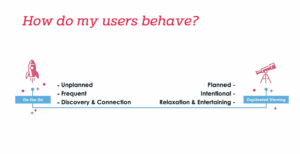
In order for our creatives to be as effective as possible, we need to fully understand our users. This is done through imagining the user in two scenarios:
The on-the-go user is always on the move, for example, scrolling through their social media on their commute to work. Therefore, their captivation is unplanned and very frequent. This is in comparison to a captivated viewing user, who plans to relax by looking through their social media and finds it entertaining.
What is our content trying to say?
The messaging of the creative is critical; what are we trying to say? It can be very easy to lose focus. Therefore, the messaging needs to be divided into two categories: brand and performance.
| Brand | Performance |
|
|
|
|
|
|
|
|
These posts need to be spaced out strategically and fed through the user’s timeline; it is vital not to have all this information in a single post.
A take-out in creation
Create an ecosystem that allows your creatives to thrive; the image below depicts each area of the ecosystem, how they interact and how this can be achieved.
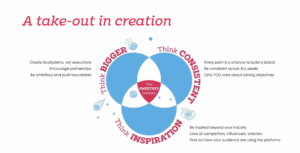
Key elements of releasing content
1.Branding
- Showcase your brand upfront
- Display yourselves to differentiate against the competition
2. Timing
- When is the content going out?
- Make sure the assets suit the environment
3. Sound
- 85% of videos are watched with the sound off
- Make sure it’s appropriate for its creative
4. Format
- Design for the platform
- Make sure the ad is getting the best opportunity it deserves
5. Attention
- Balance is key, re-engage the user throughout
6. Explore
- Play with platform limitations and get creative to engage the user
- Be native and experimental
Summary
- Be relevant and think about what your users want over your own ambition
- Stick to what you’re experts in
- Create a campaign that transcends one particular holiday
- You have 0.125 seconds to grab someone’s attention
- Users will stay with you if you draw them in
- Own your own creative so you don’t sell your competition’s
- Be consistent throughout your assets and with your entire campaign
- Remember customers online and in the real world
- Think ecosystems, not executions
- Track user engagement and see who your daily customers have been
The presenter of this webinar is Head of Client Strategy, Thom Shardlow, who has worked with the biggest brands from a creative and outcome-driven approach. From amplifying sales to engagement across all associated channels, Thom has 14+ years of demonstrated & proven results in planning, managing and executing brand strategy campaigns.
If you have read the summary, and are still interested, why not watch Thom’s webinar?

